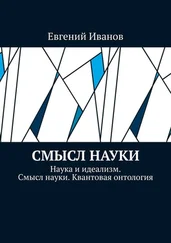59См. изображения в: Katy Börner, Atlas of science. Visualizing what we know (Cambridge: MIT Press, 2010); а также на веб-сайте: http://scimaps.org/atlas/maps.
60Conseil des académies canadiennes [Совет канадских академий], Éclairer les choix en matière de recherche: indicateurs et décisions (Ottawa: Conseil des académies canadiennes, 2012).
61См.: Vincent Larivière, Éric Archambault, Yves Gingras, “Long-term variations in the aging of scientific literature: from exponential growth to steady-state science (1900–2004),” Journal of the American Society for Information Science and Technology, 59, 2008, pp. 288–296.
62См.: Matthew L. Wallace, Vincent Larivière, Yves Gingras, “Modeling a century of citation distributions,” in Journal of Informetrics , 3, 2009, pp. 296–303.
63См.: “Citations track the fate of cold fusion,” in New Scientist , 1713, 21 April 1990.
64Anthony F. J. van Raan, “Sleeping beauty in science,” in Scientometrics , 59, 2004, pp. 461–466.
65См.: Y. Gingras, “La carrière des publications d’Ettore Majorana. Une étude bibliométrique,” in Revue de synthèse , 134, 2013, pp. 75–87.
66Peter A. Lawrence, “The mismeasurement of science,” in Current Biology , 17, 2007, pp. R584–R585.
67См.: Y. Gingras, “Revisiting the ‘quiet debut’ of the double helix: a bibliometric and methodological note on the ‘impact’ of scientific publications,” in Journal of the History of Biology , 43, 2010, pp. 159–181.
68См.: Y. Gingras, “The collective construction of scientific memory: the Einstein — Poincaré connection and its discontents, 1905–2005,” in History of Science, 46, mars 2008, pp. 75–114; idem , “The transformation of physics from 1900 to 1945,” in Physics in Perspective , 12, 2010, pp. 248–265.
69См.: Eugene Garfield, “Random thoughts on citationology. Its theory and practice,” in Scientometrics , 43, 1998, pp. 69–76.
70См.: Eugene Garfield, “‘Science Citation Index.’ A new dimension in indexing,” in Science , 144, 8 May, 1964, pp. 649–654.
71См.: Norman Kaplan, “The norms of citation behavior: prolegomena to the footnote,” in American Documentation , 16, 1965, pp. 179–184.
72Derek de Solla Price, Little Science, Big Science , op. cit., p. 65.
73Charles Bazerman, Shaping Written Knowledge (Madison: The University of Wisconsin Press, 1988).
74James E. McClellan III, Specialist Control. The Publications Committee of the Académie Royale des Sciences (Paris), 1700–1793 (Philadelphie: American Philosophical Society, 2003), pp. 33 and 38.
75См.: Loet Leydesdorff, “Theories of citation?”, in Scientometrics , 43, 1998, pp. 5–25.
76См.: Blaise Cronin, The Citation Process. The Role and Significance of Citations in Scientific Communication , Londres, Taylor Graham, 1984.
77См.: G. Nigel Gilbert, “Referencing as persuasion,” in Social Studies of Science , 7, 1977, pp. 113–122.
78См.: Joseph Bensman, “The aesthetics and politics of footnoting,” in Politics, Culture and Society , 1, 1988, pp. 443–470; в этом длинном эссе нет ни одной ссылки или конкретных данных, а лишь пространная спекуляция на тему прогрессирующей самореферентности и стратегий цитирования.
79См.: Vincent Larivière, Alesia Zuccala, Éric Archambault, “The declining scientific impact of theses: implications for electronic thesis and dissertation repositories and graduate studies,” in Scientometrics , 74, 2008, pp. 109–121; см. также: Matthew L. Wallace, Vincent Larivière, Yves Gingras, “A small world of citations? The influence of collaboration networks on citation practices,” in PlosOne , 7, 2012, e33339.doi:10.1371/journal.pone.0033339.
80См.: Susan Bonzi, H. W. Snyder, “Motivations for citation: A comparison of self citations and citations to others,” in Scientometrics , 21, 1991, pp. 245–254; см. также: Béatrice Millard, “Les citations scientifiques: des réseaux de références dans des univers de références. L’exemple d’articles de chimie,” in REDES, Revista hispana para el análisis de redes sociales , 19, 2010, pp. 69–93.
81См.: ESF [Европейский научный фонд], ESF Survey Analysis Report on Peer Review Practices , ESF, March 2011; www.esf.org/fileadmin/Public_documents/Publications/pr_guide_survey.pdf.
82Marie Boas Hall, Henry Oldenburg. Shaping the Royal Society (Oxford: Oxford University Press, 2002), p. 84. Первым научным журналом действительно был Journal des savants , издававшийся Дени де Салло с января 1665 года. Однако три месяца спустя его выпуск был запрещен. Потом он был возобновлен, однако его содержание стало весьма разнородным и касалось всех видов деятельности «литературной республики». Это была скорее литературная газета, нежели реферируемый научный журнал в современном смысле.
83 Idem, ibidem , pp. 167–169.
84См.: Y. Gingras, Sociologie des sciences, op. cit ., pp. 48–51.
85См.: Lewis Pyenson, “Physical sense in relativity: Max Planck edits the Annalen der Physik , 1906–1918,” in Annalen der Physik , 17, 2008, pp. 176–189.
86См. подробнее эту историю в: Daniel Kennefick, “Einstein versus the Physical Review ,” in Physics Today , 58, September 2005, pp. 43–48.
87См.: Y. Gingras, Les Origines de la recherche scientifique au Canada (Montréal: Boréal, 1991).
88См.: James M. England, A patron for pure science: the National Science Foundation’s formative years, 1945–57 (Washington D. C., NSF, 1982).
Читать дальше
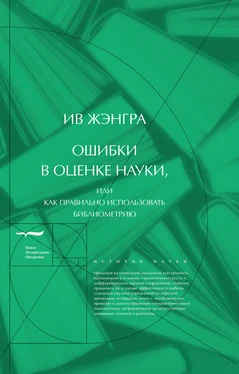



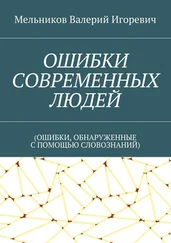
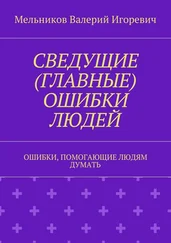
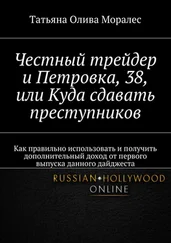
![Ив Жангра - Ошибки в оценке науки, или как правильно использовать библиометрию [калибрятина]](/books/390964/iv-zhangra-oshibki-v-ocenke-nauki-ili-kak-pravilno-thumb.webp)

